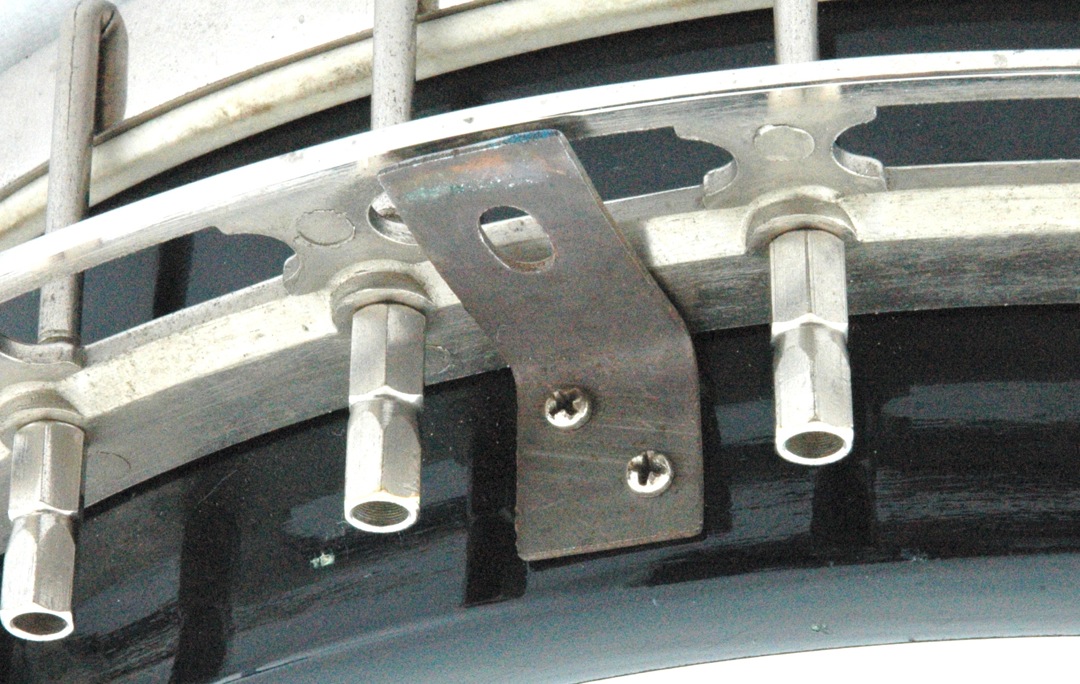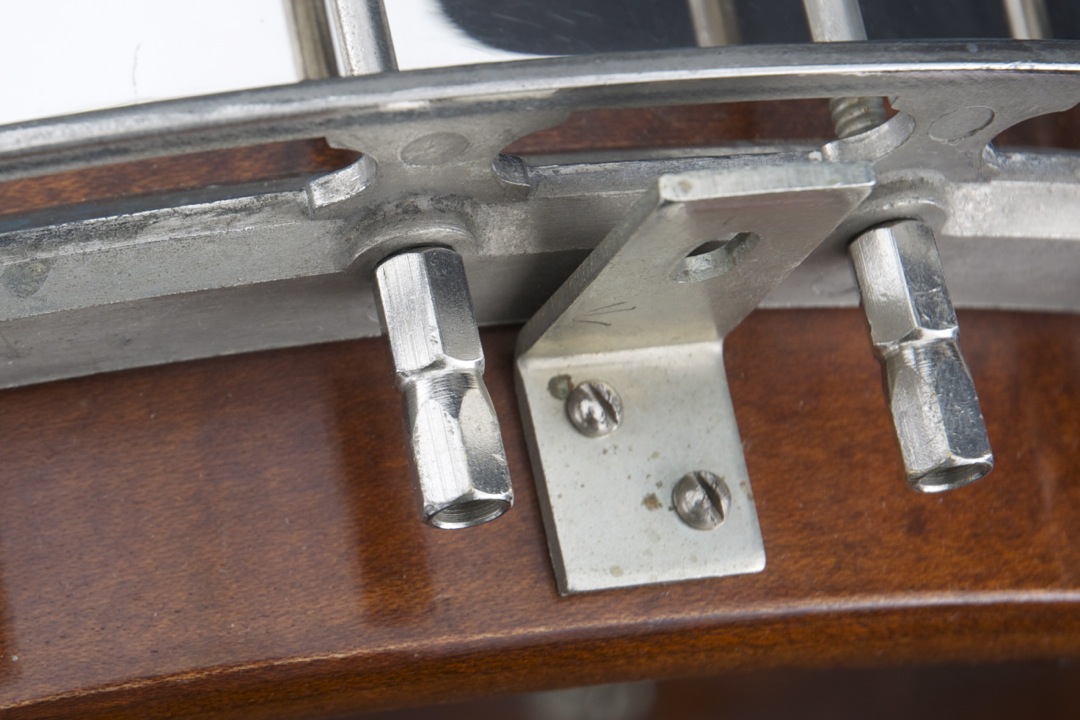L-brackets were used in conjunction with a thumbscrew and wall lug to fasten the resonator to the banjo. The most common type of L-bracket had a slotted hole to accept the thumbscrew. Two-piece flange banjos had a shorter L-bracket due to the larger diameter of the rim. In the war years, L-brackets became very thin and were nicknamed “tin can L-brackets”.

From Bottom to Top: Tin Can L-Bracket, One-Piece Flange L-Bracket, Two-Piece Flange L-Bracket

Side View – Same as Above
L-Bracket Screws
Gibson used three different types of screws to attach the L-bracket to the rim. Up until the mid 1930s, a half-cut slot head screw was used. After that, they began using a full cut slot head screw and around 1939-40, a half-cut Phillips head screw became the new standard.

L-Bracket Screws

Tin Can L-Bracket with Phillips head screws.

One-Piece Flange L-Bracket with slot head screws.
